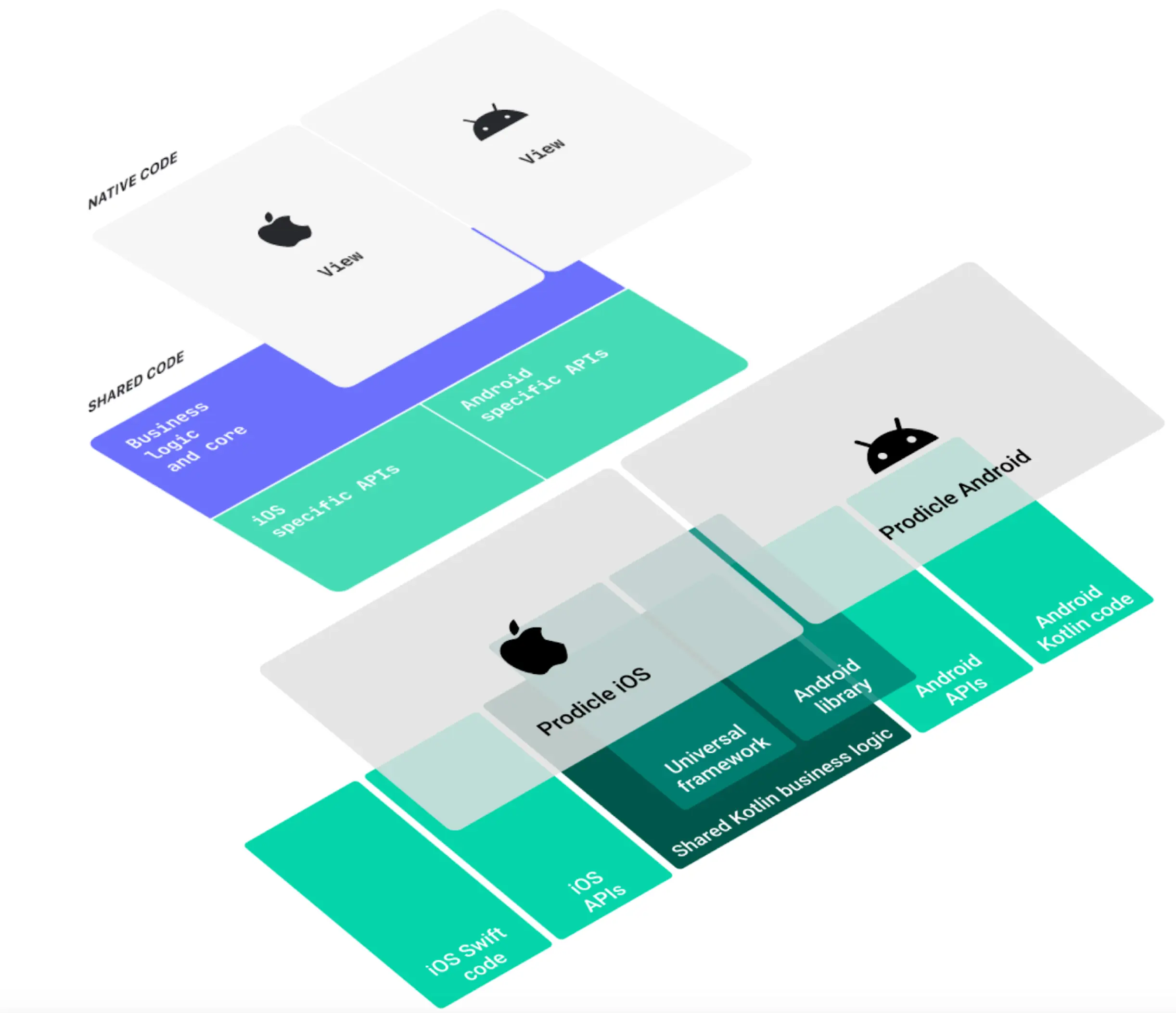
In the ever-evolving landscape of digital technology, cybersecurity remains a pivotal concern, especially in the realm of Android app development. The stakes are high; a single breach can compromise user trust, attract legal scrutiny, and tarnish a brand's reputation. This blog post aims to illuminate the critical importance of adhering to established cybersecurity standards, specifically those set by the Open Web Application Security Project (OWASP) and the National Institute of Standards and Technology (NIST).
These standards are not just technical guidelines but are foundational elements that fortify an app's security infrastructure against an array of cyber threats. By integrating OWASP and NIST guidelines into Android development processes, developers and security professionals can significantly enhance the safety and integrity of their applications.
Our discussion will navigate through the nuances of these standards, underscore the risks of non-compliance, and highlight the multifaceted benefits of their adoption. Whether you are a seasoned developer, a cybersecurity novice, or simply intrigued by the world of app security, this exploration aims to offer valuable insights into creating more secure and trustworthy Android applications.
Unraveling the Essence of OWASP and NIST in App Security
The Open Web Application Security Project (OWASP) stands as a beacon in the cybersecurity domain, particularly in web and mobile application security. A non-profit foundation, OWASP provides an open-source framework for understanding, analyzing, and improving software security. Its guidelines, especially the OWASP Top Ten, are a definitive resource for developers to identify and protect against the most critical security risks to web applications.
In the context of mobile app development, OWASP's Mobile Security Project offers a wealth of knowledge, encompassing security threats, controls, and best practices tailored for the mobile environment. These guidelines are particularly vital for Android developers, given the platform's vast user base and diverse ecosystem.
The National Institute of Standards and Technology (NIST), on the other hand, serves as a pillar in the broader spectrum of cybersecurity. This U.S. federal agency sets the standard for cybersecurity practices across various industries. NIST's guidelines are renowned for their comprehensive approach to security, emphasizing risk management, cybersecurity frameworks, and protective technology.
While NIST's guidelines provide a broad framework applicable to various technologies, they are particularly pertinent to mobile app development. They offer insights into securing not just the app, but also the underlying infrastructure, encompassing aspects like data encryption, user authentication, and system integrity.
The synergy between OWASP and NIST standards is what makes them particularly powerful for Android app development. While OWASP zeroes in on specific application-level vulnerabilities and countermeasures, NIST provides a more holistic view of the cybersecurity landscape. Together, they form a robust framework for developers and security professionals, guiding them in building secure, resilient, and trustworthy applications.
By integrating these standards, developers can ensure their apps are not just functionally robust but also fortified against an array of cyber threats. In the subsequent sections, we delve deeper into the risks of ignoring these standards, the manifold benefits of adherence, and practical strategies for implementation in Android development.
The Perils of Ignoring Cybersecurity Standards in Android App Development
The digital world is fraught with vulnerabilities, and non-compliance with standards like OWASP and NIST can expose Android apps to severe risks. Ignoring these guidelines doesn't just increase the probability of a security breach; it can lead to dire consequences for both the users and the developers.
Data Breaches and Loss of User Trust:One of the most immediate repercussions of inadequate security measures is the risk of data breaches. For instance, failing to adhere to OWASP's guidelines on data storage and encryption can leave sensitive user information vulnerable to theft and misuse. Such incidents not only result in legal complications but also erode user trust, which is crucial for the success of any app.
Financial Losses and Reputation Damage:Security flaws can lead to substantial financial losses, either through direct theft, such as in cases of inadequate transaction security, or through the costs associated with rectifying a breach. Moreover, the reputational damage following a security incident can have long-lasting effects on a brand's image and customer loyalty.
Regulatory Non-Compliance and Legal Challenges:Non-compliance with NIST guidelines, especially in sectors where data security is regulated, can attract legal scrutiny and penalties. This aspect is increasingly significant as data protection laws become more stringent globally.
In essence, disregarding OWASP and NIST standards in Android app development is akin to leaving the door wide open for cybercriminals. The subsequent sections will shed light on the benefits of adhering to these standards and how to effectively implement them in your development process.
Advantages of Embracing OWASP and NIST Standards in Android Development
The adoption of OWASP and NIST guidelines in Android app development transcends mere regulatory compliance; it brings about a multitude of benefits that can elevate both the app's quality and the developer's reputation.
Enhanced Security and Robust Protection:The primary advantage is the significant enhancement in security. By following OWASP's application-specific guidelines, developers can shield their apps from common vulnerabilities like SQL injections, cross-site scripting, and authentication failures. Similarly, NIST's comprehensive approach to cybersecurity fortifies the app's underlying infrastructure, protecting against more systemic threats.
Building User Trust and Confidence:In an era where data breaches are increasingly common, security is a key differentiator in the market. Apps that are known to adhere to high security standards like OWASP and NIST naturally garner more trust from users, translating into higher download rates and user retention.
Alignment with Regulatory Requirements:As global awareness about data security rises, so do regulatory demands. Adhering to these guidelines ensures that the app is in compliance with various international data protection laws, reducing the risk of legal issues and penalties.
Competitive Advantage in the Market:In a crowded app marketplace, security can be a compelling selling point. An app that boasts compliance with respected standards like OWASP and NIST can stand out, attracting discerning users who prioritize their data privacy and security.
Long-term Cost Savings:While integrating these standards might require upfront investment, it can lead to significant cost savings in the long run. Secure apps are less likely to suffer from breaches, which can be costly in terms of rectification, legal fees, and reputational damage control.
In the next section, we'll delve into practical strategies for implementing OWASP and NIST standards in Android app development, ensuring your applications are not just innovative but also secure and reliable.
Practical Strategies for Integrating Security Standards in Android Apps
Implementing OWASP and NIST standards in Android app development is not just about ticking boxes; it's about ingraining a culture of security within the development process. Here are actionable strategies to effectively incorporate these guidelines:
- Start with a Security-First Mindset: The journey begins by fostering a security-first culture within the development team. This involves prioritizing security at every stage of the development lifecycle, from design to deployment.
- Regularly Review and Update Security Measures: Security is not a one-time task but a continuous process. Regularly review your app against OWASP's Top Ten Mobile Risks and update your security measures to address new vulnerabilities and threats.
- Integrate Security in the Development Lifecycle: Implement secure coding practices as recommended by OWASP. This includes input validation, proper session handling, and implementing secure communication protocols.
- Utilize NIST's Cybersecurity Framework: Leverage NIST's framework for managing cybersecurity-related risk. This framework provides a flexible structure to assess current processes and identify areas for improvement in risk management and data protection.
- Conduct Regular Security Testing and Audits: Perform thorough testing, including penetration testing and code reviews, to identify and fix security flaws. Auditing your app against NIST and OWASP standards can reveal gaps in your security posture.
- Educate and Train Your Development Team: Regular training and workshops for your team on the latest security trends and best practices are crucial. This ensures that every team member is aware of the importance of security and knows how to implement these standards.
- Embrace Security Tools and Technologies: Utilize tools and technologies that support security. For instance, automated security testing tools can help in identifying vulnerabilities early in the development process.
By embedding these practices into your development workflow, your Android app will not only be feature-rich but also resilient against an array of cyber threats.
Leveraging Tools and Best Practices for Enhanced App Security
In the quest to align with OWASP and NIST standards, leveraging the right tools and adhering to best practices is crucial. These not only simplify compliance but also ensure that security is a consistent element of the development process.
Security Tools:
A Key to Compliance: Various security tools play a pivotal role in achieving and maintaining compliance with OWASP and NIST standards. For instance, static application security testing (SAST) tools can automatically scan your code for vulnerabilities, aligning with OWASP’s recommendations. Similarly, utilizing NIST’s security checklists and templates can streamline the process of ensuring that all security bases are covered.
Regular Updates and Patch Management: The cyber threat landscape is ever-changing, necessitating regular updates and patches to your applications. This aligns with NIST’s emphasis on continuous monitoring and risk management. Regular updates not only fix vulnerabilities but also ensure that the app stays compliant with the latest security standards.
Ongoing Education and Awareness: The field of cybersecurity is dynamic, with new threats and vulnerabilities emerging constantly. Ongoing education and awareness for your development team are vital. This includes staying abreast of the latest updates to OWASP and NIST standards, attending relevant webinars, and participating in security forums.
Practice Continuous Monitoring and Response: Implementing continuous monitoring tools helps in detecting and responding to threats in real-time. This proactive approach to security, advocated by both OWASP and NIST, is essential in today’s fast-paced digital environment.
By integrating these tools and practices, you ensure that your Android apps are not just compliant with OWASP and NIST standards but also resilient in the face of evolving cyber threats.
Staying Ahead of the Curve in a Rapidly Changing Security Landscape
The cybersecurity landscape is in constant flux, presenting new challenges, particularly with the advent of AI-driven security threats. For Android app developers, staying ahead of these emerging threats is critical.
Emerging AI Security Threats: The integration of AI into cyber-attacks has introduced a new level of sophistication. AI algorithms can automate attacks, adapt to defensive strategies, and exploit vulnerabilities in unprecedented ways. Android developers must be especially vigilant against these advanced threats, which can range from intelligent phishing schemes to automated exploitation techniques.
Proactive Integration of Security Measures: To effectively counter these threats, proactive security integration is essential. This involves not only adhering to OWASP and NIST standards but also being proactive in anticipating and mitigating future security challenges. Regular updates to security strategies are crucial to address the latest threats, including those powered by AI.
Anticipating the Release of Innovative Tools: An example of forward-thinking in the cybersecurity space is the development of tools like the GoatBytes.IO Security SDK. Although still in active development and not yet released, this SDK promises to offer advanced security features to help developers meet and exceed OWASP and NIST standards, while also tackling the challenges posed by AI-driven cyber threats.
In essence, the fast-evolving nature of cybersecurity means that Android app developers must not only comply with current standards but also stay informed and prepared for future threats, especially those involving advanced AI techniques. Embracing a forward-looking approach and keeping an eye on emerging tools, even those in development like GoatBytes.IO, is key to maintaining robust app security.
Emphasizing the Critical Role of OWASP and NIST Standards in Android App Security
As we navigate the complexities of Android app development in today's cyber-centric world, the importance of adhering to OWASP and NIST standards cannot be overstated. These guidelines serve as the cornerstone of app security, offering a structured approach to safeguard against an array of cyber threats, from traditional hacking techniques to emerging AI-driven attacks.
The journey towards securing an app is continuous, demanding regular updates, a keen understanding of evolving threats, and a proactive stance in integrating the latest security measures. By embracing these standards, developers not only enhance the security and integrity of their apps but also build a foundation of trust with their users.
In an era where data breaches and cyber threats are becoming increasingly sophisticated, a commitment to these security standards is not just a best practice; it is a necessity. The ongoing development of tools like the GoatBytes.IO Security SDK underscores the industry's recognition of the need for advanced solutions to meet these challenges.
Ultimately, the integration of OWASP and NIST standards is more than a compliance checklist; it is a commitment to excellence and trustworthiness in the digital world.
Take the Next Step in Fortifying Your Android App
In the rapidly evolving world of app development, staying ahead in security is paramount. We encourage you to delve deeper into the resources offered by OWASP and NIST to enhance your knowledge and application of these critical security standards.
Whether you are an experienced developer, a cybersecurity enthusiast, or a stakeholder in the digital landscape, engaging with these guidelines and tools is essential. Keep an eye out for innovative solutions like the upcoming GoatBytes.IO Security SDK, and continuously update your security strategies to combat the latest threats.
Join us in the commitment to creating safer, more secure Android applications. Embrace the standards, tools, and practices that will not only protect your app but also fortify its place in the ever-changing world of technology.
References
- Open Web Application Security Project (OWASP) - Comprehensive guidelines on web and mobile application security.
- National Institute of Standards and Technology (NIST) - Extensive cybersecurity frameworks and guidelines.
- NIST Special Publication 800-163 - Detailed insights into risk management and security practices for mobile applications.
- OWASP Mobile Security Project - Tools and resources for mobile app security.
- Cybersecurity & Infrastructure Security Agency (CISA) - Best practices for mobile app security.
- Android Developers Security Guide - Official guide for securing Android apps.
- Academic Journals on Cybersecurity - In-depth research findings and technical insights into cybersecurity.
- Case Studies on Data Breaches - Real-world examples of security breaches and their impact.














